Inappropriate contact with the wanderer with developed varicose veins is the main reason why ointment or gel disease is too late.Doctors must prescribe more effective treatments, with surgery for varicose veins in the legs being the most effective.We should not forget that even the manipulation of blood vessels affected by the disease cannot guarantee a complete cure - the disease can spread to healthy tissues.
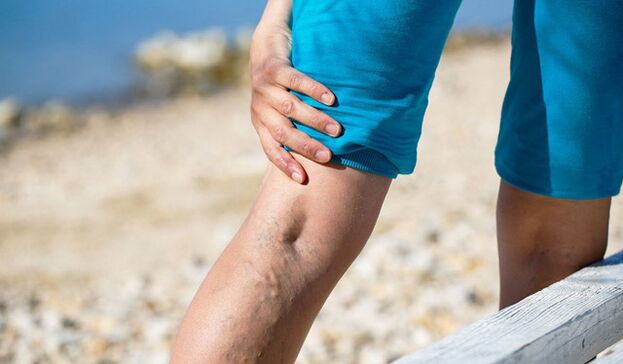
Varicocele or varicose veins are a disease characterized by dysfunction of the veins and blood vessel walls and blood stagnation in the veins of the lower limbs.This pathology not only violates malnutrition or fabric nutrition, but the result can be difficult and long-term healing nutritional ulcers, but also dangerous, because stagnant blood thickens, which can be carried through the flow of the entire body.Additionally, if a thrombosis develops within the blood vessel wall (solving bone embolism), it may be infected with the infection of a powerful disease - thrombophlebitis.
Varicocele surgery
Surgery for varicose veins in the lower limbs is fundamental, including the removal of subcutaneous veins of the lower limbs (venectomy) or sclerosis of the deep veins in the lower leg and hips.
Traditionally, veinectomy (transverse ectomy) is performed according to the Bebcock method and involves introducing a probe into the cavity of the vein, followed by the vein extending through its length through the cut on the external skin.The incision is sewn with cosmetic seams at the end of the operation.
A tiny resection is used to remove very short veins, and during the procedure, no veins are used.Cutting on the skin is not performed and a piece of vein is removed through a thin puncture on the skin that does not require the application of a seam.
Because of the small damage to varicose veins, a milder technique can be performed - stripping.This only has a thin hook with only varicose veins nodes protruding out.Experience is performed by following two cuts of the skin through subsequent suture.Various of these techniques are frozen textures - using low temperatures to "sink" into the frozen body, and the destructive nodes are also protruded.
Vienna sclerosing is the introduction of a sclerosing agent into its cavity - a substance that "bones" the wall of the vein, but the veins remain deep in the skin, rather than performing their functions.Blood flowing through the veins stops and passes through the enclosed blood vessels without violating the flow of blood from the veins of the lower limbs.Vienna sclerosis occurs under ultrasound control.
Intravascular coagulation of varicose veins is the latest method in hemorrhage, including the introduction of thin probes into the cavity of the vein with laser radiation, which exerts a cavitation effect on the walls of the vein.
Radiofrequency methods for releasing veins also refer to more modern treatments for varicose veins, but not all medical institutions are equipped with appropriate equipment.This technology includes the "burn-down" effect on the blood vessel walls of high-frequency radio waves.
Indications for clearing veins
Not all patients have undergone surgery, but in some cases it is still impossible to do without it, as removing potential inflammation and sources of blood clots is better than expected complications.Countries that require surgical intervention include the following:
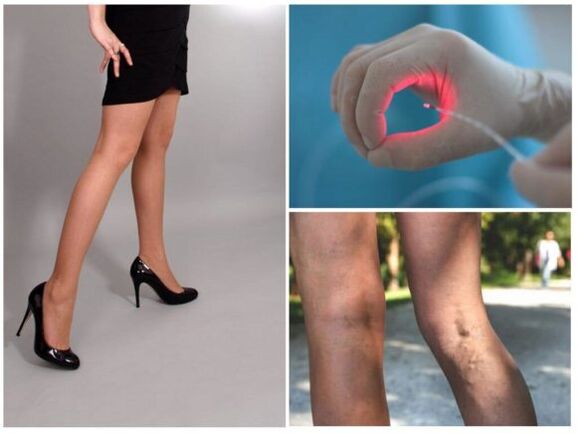
- risk of occurrence or risk of thrombophlebitis that has already occurred,
- Frequently aggravate thrombosis,
- Great damage to subcutaneous veins,
- Severe symptoms of varicose veins - the severity of the legs and the constant feeling of pain,
- Non-modified nutritional ulcers,
- Diseases of lower limb nutrition (nutrition) - Color changes and cooling of the skin of the legs and feet.
Contraindications to action
Even minimal vascular intervention is contraindicated in the following situations:
- Pregnancy 11 and 111 pregnancy,
- Acute infectious diseases,
- Aggravated by chronic diseases (bronchial asthma, diabetes, gastric ulcer, etc.)
- Acute stroke,
- Acute myocardial infarction,
- Inflammation of the lower limbs is elevated.
In any case, all indications and contraindications are determined by a phlebotomist or surgeon during the full-time examination of the patient.
Which method to choose?
Depending on the extent of transmission of the process, the use of a specific treatment is evaluated only by the doctor.
Of course, less invasive approaches are desirable for small nodes, such as minionectomy, short stripping, laser sprinklers and sclerosis, as they are less traumatic and do not actually require a recovery period.Meanwhile, varicose veins with a large length prefer traditional veinsectomy, which not only requires spinal anesthesia, but is also a rather painful procedure, leaving aesthetic flaws in the messy post-operative form on the legs.
In this regard, you should not postpone visits to your doctor during the current initial stages of varicose veins, and more importantly, if the doctor needs this at the time of the examination, you don’t have to give up a less traumatic surgery.
When can it be better to operate?
The decision to undergo surgical treatment is required only after consulting a bleed expert or vascular surgeon.However, in the early stages, when the patient cares about aesthetic discomfort only for the form of varicose lymph nodes, and a slight swelling of the foot at the end of the day, you can try using compressed knitted clothing and venotonic drugs to stop further progress of the process.
Delayed operation is not recommended when there are limb pain and risk of complications.
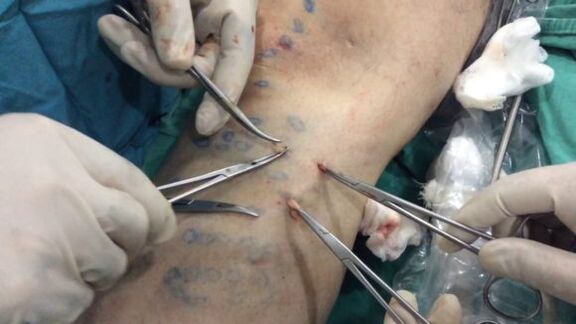
Prepare for operation
Before planning a surgery to remove the vein, patients should undergo many necessary tests.These include consultation with surgeons or wanderers, as well as ultrasound examination of lower limb veins.In the case of patients showing that they are displayed by removing the vein, examinations should be performed at the outpatient stage, especially general and biochemical blood tests, blood tests of coagulation (INC, ACTS, etc.), and ECG and X-rays of chest organs should be performed.
On the day prescribed by the doctor, patients must go to a medical institution for vein removal.You can independently shake your hair on the lower legs, thighs and groin areas on the sides of the affected limb.The day before, you should limit yourself to a small amount of dinner, and during surgery, it is necessary to take an empty stomach.Patients must warn the surgeon and anesthesiologist for prior drug intolerance.
How to do it
The anesthesia problem was resolved after the patient arrived at the clinic and was initially examined by a surgical surgeon and anesthesiologist.In the case of routine venectomy, spinal anesthesia is used with micro-manipulation, using local anesthesia is by suffocating the skin with Novocaine or Lidocaine solution.
After the anesthesia occurs, surgeons use ultrasound multibotany (UZDG) to establish the location of the vein.Next, through the incision in the skin, a probe is introduced, and the main stages of the surgery are introduced during the vein resection - the intersection of the venous area and the dressing, to a tiny osteectomy (by puncture only, not through the incision) or to a laser exposed to the ship's walls.The main phase takes half an hour to two to three hours, depending on the number of operations.
After the main stage, the cut is sutured on the skin, a sterile bandage is applied to the wound, and the patient is escorted to the ward, where he will observe during observations from several hours to one day.In the ward, the patient wore compressed flax and was not removed for three days.
A day later, the patient went home.If the surgeon prescribes seasoning, they will be visited every day or every other day.Seven days after the operation, the seams were removed, and two months later, the UP of the lower limbs was performed.
When is the operation not allowed?
Although surgery to remove veins with varicose veins can provide good predictions and be performed by effective methods, there are many factors that are contraindications for surgical intervention:
Removal of venectomy
- Thrombosis in the deep veins of the lower limbs.
- When the inflammation process occurs on the legs, it includes Erysipelas and eczema.
- Heart disease and infectious diseases.
- Second and third semesters of pregnancy.
- Countless ages.
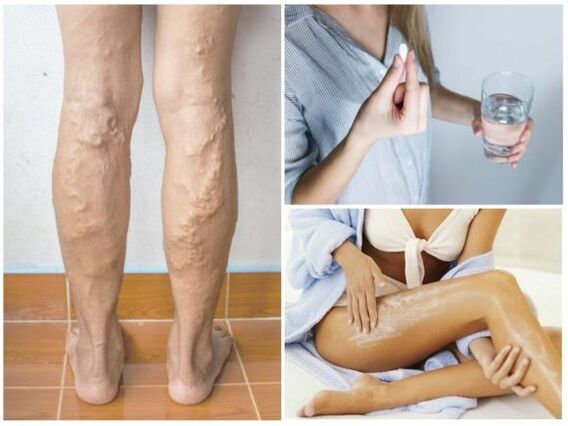
Are complications possible after the operation?
The operational technology that has been honed for decades allows you to minimize the risk of postoperative complications.However, in rare cases (less than 1%), this adverse consequence develops:
- Postoperative hematoma on the skin - resolved for several months,
- One or two months after the operation, the postoperative seal along the skin of the remote venous bed also disappeared.
- Conservative treatment is given to mechanical damage to the lymphatic vessels (lymph node stagnation) that lead to lymphatic nodes (lymph node stagnation), but a few months later, the lymphatic begins to circulate according to anastomosis and the lymphocytes of the limb are properly performed.
- The damage to the subcutaneous nerve, manifested as a transient disease of skin sensitivity - independently balanced for several months.
Complications and consequences of surgical treatment
No matter how talented the surgeon is, varicose veins after surgery sometimes make themselves feel themselves in the form of complications again.No one can assume how this creature will behave.After surgical interventions to remove varicose veins 2 and 3, there may be consequences that do not require treatment - bruises and hematomas, which are the normal responses of the body to tissue damage.If the patient follows the advice, everything will pass quickly.Among other consequences, you can also note:
- massive bleeding;
- Reduced limb sensitivity (expressing damage to subcutaneous nerves);
- Compounds entering the infection;
- Numbness, etc.
As for pain, venectomy can be observed specifically, and the other two treatments are almost painless.If unpleasant feelings are subsequently present, they can easily stop the analgesics.
The consequences can be serious; among the most dangerous thromboembolism, there is a difference.This is an acute blockage of a blood vessel, whose thrombus departs from its position and circulates with the blood flow.If the patient assists in time, he can become a disabled person or even die.
Predictions and lifestyle after surgery
After the surgery, after a few days, pain and irrelevant edema may occur in the surgical limbs.To prevent unpleasant symptoms, doctors were prescribed non-replacement drugs - Ketorol, Nise, etc.After the operation, the patient should immediately start wearing compressed underwear and perform physical therapy exercises prescribed by the doctor.
The day after the operation, the patient was allowed to walk a little.After a week or two, make sure to walk slowly for several hours a day.
Such regulations:
- Reject bad habits,
- Proper nutrition, besides fat and harmful products,
- abide by the regime of work and rest,
- Exclusion of sitting or standing positions only during working hours - the position of the limbs needs to be changed during the process.
Anyway, I want to point out that, from the comments, the procedure for removing the vein is very favorable, and serious complications are not actually present.Furthermore, the risk of threat (e.g., thromboembolic) of varicose veins is reduced dramatically after removal of the venously dilated veins.Currently, severe inflammation or even gangrene-induced limb amputation is not uncommon due to thrombosis (especially in the context of diabetes), so it is best to contact the surgeon at the early stage and not to refuse to remove the vein when needed.So you need not only keep your limbs healthy, but also the whole organism.
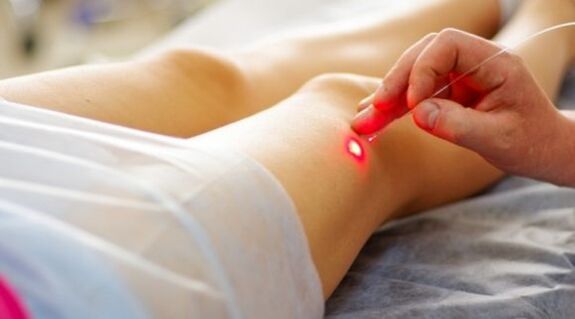
Preventive measures
For adverse genetics, it is important to take precautions when a relative is diagnosed with varicose veins or someone is at risk for other reasons:
Intravenous injection
- Take vitamin C regularly, thereby enhancing the walls of blood vessels and improving the characteristics of blood composition.
- When using medication, you must agree with your doctor;
- Use compressed linen;
- Sports is important, swimming, walking, cycling, and blood flow well.
Prevention also means transitioning to a healthy lifestyle – you need to modify your diet and give up bad habits.


















